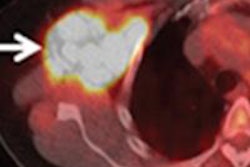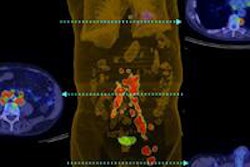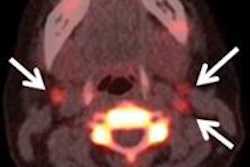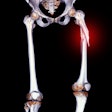FDG-PET/CT achieved greater sensitivity, negative predictive value, and accuracy than bone marrow biopsy in patients with diffuse large B-cell lymphoma, according to a study published in the current issue of the Journal of Nuclear Medicine (August 2013, Vol. 54:8, pp. 1244-1250).
Researchers from the Centre Georges-François Leclerc in Dijon, France, also found that FDG-PET/CT changed treatment plans for 42% of patients with bone marrow involvement.
While bone marrow biopsy is considered the gold standard to evaluate bone marrow involvement by high-grade lymphomas, FDG-PET/CT is the best method to evaluate the extension of the disease and avoid invasive procedures, according to lead author Dr. Louis Berthet.
The retrospective study included 133 patients diagnosed with diffuse large B-cell lymphoma. All patients received both a whole-body FDG-PET/CT scan and a bone marrow biopsy. A final diagnosis of bone marrow involvement was made when a biopsy was positive or if the positive PET/CT scan was confirmed by a guided biopsy, targeted MRI, or the disappearance of focal bone marrow uptake after chemotherapy and by uptake in other lymphoma lesions on FDG-PET/CT.
The study found 33 patients with bone marrow involvement. Of those cases, eight people (24%) were positive according to the biopsy and 32 patients (97%) were positive according to the PET/CT scan.
FDG-PET/CT was more sensitive (94%, compared with 24%), showed a higher negative predictive value (98%, compared with 80%), and was more accurate (98% compared with 81%) than bone marrow biopsy.
Among the 26 patients with positive FDG-PET/CT results and negative biopsy results, 11 cases (42%) were upstaged to stage IV by PET/CT, which changed treatment plans. FDG-PET/CT also was an independent predictor of progression-free survival.




















